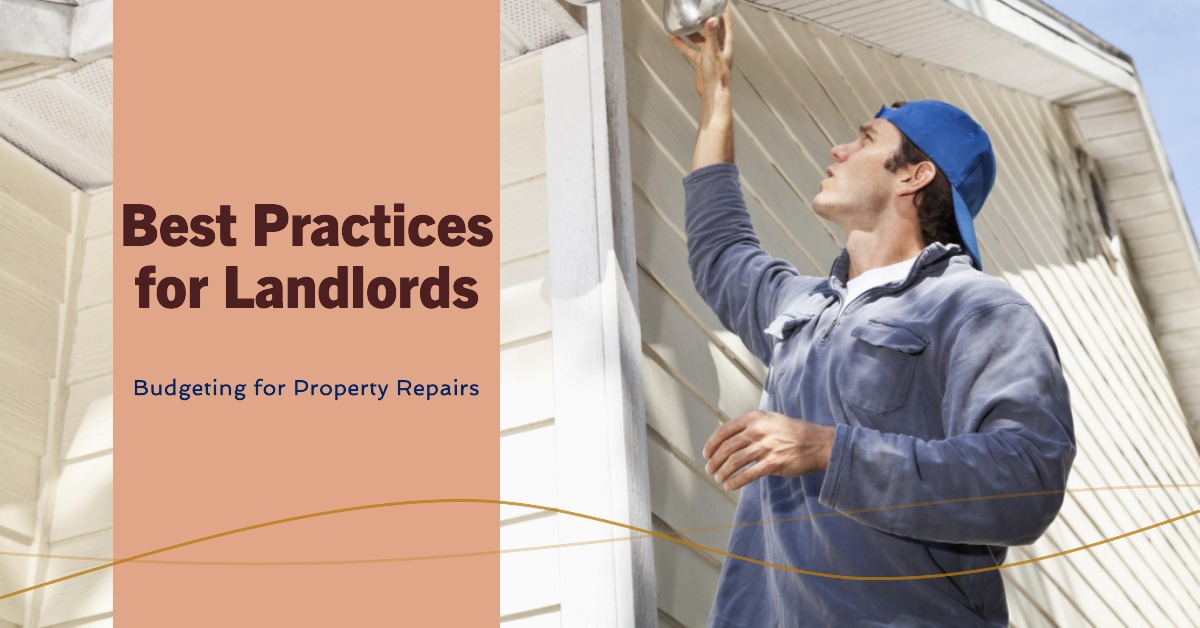To budget effectively for property repairs, set up a contingency fund of 1-3% of your property’s value annually. Automate these savings and keep detailed records for tax deductions, distinguishing between repairs and improvements. Estimate costs accurately by documenting potential repairs and analyzing historical expenses. Prioritize preventive maintenance and schedule regular inspections to catch issues early. Build strong relationships with contractors for reliable service and better rates. Use technology for tracking and managing expenses. Finally, understand your property insurance thoroughly to guarantee adequate coverage. By adhering to these practices, you’ll stay financially prepared and protect your investment wisely. Discover more actionable strategies ahead.
Setting Up a Contingency Fund
Setting up a contingency fund is essential for guaranteeing you’re financially prepared for unexpected property repairs. An emergency fund acts as a financial cushion, allowing you to address unforeseen issues without compromising your budget or risking your financial freedom. To start, establish a savings strategy tailored to your property’s unique needs and your financial situation.
First, determine a realistic amount for your contingency fund. A good rule of thumb is to aim for 1-3% of your property’s value, setting aside this percentage annually. For instance, if your property is valued at $300,000, your emergency fund should ideally range between $3,000 to $9,000 each year. This approach guarantees that you have sufficient funds to handle minor repairs and more significant, unexpected expenses.
Next, automate your savings to build your fund consistently. Set up a separate, easily accessible account specifically for property repairs. Consider scheduling monthly transfers to this account to streamline the process and guarantee you stay on track.
Additionally, review and adjust your savings strategy periodically based on changes in your property’s condition or market value.
Estimating Repair Costs
Accurately estimating repair costs guarantees you allocate your budget effectively and avoid unexpected financial strain. To achieve this, you need a meticulous approach.
Begin by documenting all potential repairs and their average costs. This requires a solid understanding of your property’s condition and frequent review of market rates for labor and materials.
Here’s a quick guide to streamline your repair cost estimation:
- Historical Data Review: Analyze past repair expenses on your properties. This provides a baseline for future costs and helps you identify recurring issues.
- Professional Assessments: Hire qualified inspectors to evaluate the property. Their insights can uncover hidden problems and provide accurate cost forecasts.
- Tenant Feedback Analysis: Regularly gather feedback from your tenants regarding maintenance needs. Their input can highlight issues you might overlook and prevent minor problems from escalating.
Prioritizing Preventive Maintenance
Prioritizing preventive maintenance helps you extend the lifespan of your property and avoid costly repairs down the line. By implementing preventive strategies, you can address minor issues before they escalate into major problems. Start by creating detailed maintenance schedules for each property. Regularly inspect critical systems like plumbing, HVAC, and electrical setups to catch any wear and tear early.
A well-thought-out maintenance schedule guarantees you’re not caught off guard by unexpected breakdowns. Set aside a portion of your budget specifically for preventive maintenance. This proactive approach not only saves money but also keeps your tenants satisfied, reducing turnover rates. Perform seasonal tasks, such as checking the roof for leaks before the rainy season or confirming heating systems function correctly before winter.
Invest in quality materials and skilled labor for these preventive tasks; it’s a cost-effective strategy in the long run. A stitch in time saves nine, and this couldn’t be truer when it comes to property management.
Building Relationships With Contractors
Establishing strong relationships with commercial contractors is essential for managing property repairs efficiently and cost-effectively. Clear contractor communication and trust building can save you time and money while guaranteeing your properties remain in top condition.
First, communicate your expectations upfront. Clearly outline the scope of work, deadlines, and budget constraints before the project begins. This transparency helps avoid misunderstandings and keeps the project on track.
Regular Check-ins: Conduct regular check-ins with your contractors. Whether through phone calls or site visits, staying engaged with the project’s progress fosters accountability and allows you to address any issues promptly.
Mutual Respect: Treat your contractors with respect and fairness. Pay invoices on time, give constructive feedback, and acknowledge their good work. Mutual respect is fundamental in trust building and long-term collaboration.
Emergency Protocols: Establish emergency protocols. Having a clear plan for handling urgent repairs can prevent chaos and guarantee your contractor is prepared to act swiftly. This saves you from potentially costly damages and demonstrates your commitment to maintaining the property.
Scheduling Regular Inspections
Regular inspections are essential for identifying potential issues early and mitigating costly repairs down the line. By setting a consistent inspection frequency, you can catch minor problems before they escalate, saving both time and money. Aim to conduct inspections at least twice a year, but adjust based on the age and condition of your property. Older properties might require quarterly checks to guarantee everything remains in good working order.
Creating and using detailed inspection checklists guarantees you don’t overlook any critical areas. Your checklist should cover key aspects such as plumbing, electrical systems, HVAC, roofing, and general wear and tear. Don’t forget to include common areas and exterior features like landscaping and drainage systems, as these can also impact overall property health.
Incorporate tenant feedback into your inspection process. Tenants are on the front lines and might notice issues you won’t see during periodic checks. Encourage them to report maintenance concerns promptly and address these issues during your regular inspections.
Consistent inspections not only preserve the property’s condition but also enhance tenant satisfaction, making your property more attractive to potential renters. By prioritizing regular inspections, you maintain control over your property’s upkeep while minimizing unexpected repair costs.
Tracking Maintenance Expenses
Effective tracking of maintenance expenses is essential for maintaining a clear and manageable budget for property repairs. By keeping a close eye on where your money goes, you can make informed decisions that protect your investment and guarantee the longevity of your property. Here’s how you can streamline this process:
- Use Digital Tools: Leverage property management software or mobile apps designed for expense tracking. These tools offer real-time updates, categorize expenses, and generate detailed reports, simplifying your maintenance budgeting efforts.
- Create Detailed Records: Document every repair, from minor fixes to major renovations. Include the date, cost, contractor details, and a brief description of the work done. This practice not only aids in budget planning but also provides valuable insights into maintenance patterns and potential recurring issues.
- Set Up a Consistent Review Schedule: Regularly review your maintenance expenses to identify trends and adjust your budget accordingly. Monthly or quarterly reviews can help you stay on top of your finances, prevent overspending, and allocate funds more efficiently.
Leveraging Tax Deductions
Maximizing available tax deductions can considerably reduce your overall property repair costs and improve your financial planning. As a landlord, you should be aware of various tax strategies to optimize your budget.
First, familiarize yourself with deductible expenses related to property repairs. These typically include the cost of labor, materials, and even certain service fees.
Next, keep detailed records of all your repair-related expenditures. This practice guarantees that you don’t miss out on any potential deductions when tax season arrives.
Remember, the IRS distinguishes between repairs and improvements. Repairs restore your property to its original condition, making them fully deductible in the year incurred. Improvements, however, add value and must be depreciated over several years.
Consider consulting with a tax professional who specializes in real estate. They can help you identify all eligible deductions and navigate complex tax rules. To fully capitalize on these improvements, consider creating a tax depreciation schedule, which helps you systematically claim deductions over the property’s lifespan.
Additionally, implementing a proactive approach to your tax strategies can lead to significant savings. For example, planning major repairs in a tax year where you anticipate higher income can offset your taxable income effectively.
Using Technology for Management
Incorporating technology into your property management process can streamline operations, reduce costs, and enhance overall efficiency. Leveraging the right tools can make a significant difference in how you manage property repairs and maintenance.
Here are three essential ways to integrate technology into your workflow:
- Property Management Apps: Utilize property management apps to keep track of all your properties, tenants, and maintenance schedules. These apps often come with features that allow you to send reminders, schedule repairs, and even manage finances. By using these apps, you can save time and reduce errors.
- Digital Maintenance Logs: Keeping digital maintenance logs helps you track all repairs and services performed on your properties. This not only guarantees that you stay on top of necessary repairs but also provides a clear record for future reference. Digital logs can be easily shared with contractors and tenants, ensuring transparency.
- Online Payment Systems: Implement online payment systems to streamline rent collection and payment of repair services. This reduces the need for manual handling of checks and cash, minimizing errors and saving time.
Understanding Property Insurance
Steering through the complexities of property insurance is essential for protecting your investment and managing repair costs effectively. Begin by understanding the scope of your property coverage. This includes knowing what types of damage and incidents are covered, such as fire, theft, or natural disasters, and what exclusions might apply.
Familiarize yourself with different coverage options, like dwelling coverage, liability protection, and loss of rental income, to guarantee you’re adequately protected.
Equally important is grasping the claims process. When damage occurs, you’ll need to act swiftly and document everything meticulously. Take photos of the damage, maintain receipts for repairs, and communicate promptly with your insurance provider.
Knowing the steps in the claims process can expedite reimbursement and minimize out-of-pocket expenses.
Don’t overlook periodic reviews of your policy. Property values and insurance terms can change, and keeping your coverage up-to-date guarantees you’re not left underinsured.
Regularly reassess your policy limits and deductibles to strike a balance between premiums and protection. By staying informed and proactive, you’ll safeguard your property and finances, granting you the freedom to manage your investments with confidence.
Planning for Major Renovations
After ensuring your property is adequately insured, it’s time to meticulously plan for major renovations to enhance its value and functionality. Start by setting clear renovation timelines to avoid unexpected delays and extra costs. Here’s a structured approach to guide you:
- Assess Property Needs: Conduct a thorough inspection to identify areas that need renovation. Prioritize tasks that will increase property value and improve tenant satisfaction.
- Budget Wisely: Create a detailed budget that covers all aspects of the renovation, including materials, labor, and potential contingencies. Aim to stick to your budget without compromising on quality.
- Incorporate Design Considerations: Choose designs that are both attractive and durable. Opt for neutral colors and timeless styles that appeal to a broad range of tenants, ensuring your property stays desirable in the long run.
Conclusion
By adhering to these best practices, you’ll keep your properties in top shape and your budget in check.
For instance, imagine you saved $5,000 in a contingency fund. When a surprise roof leak occurs, you won’t scramble for funds. Instead, you’re prepared, ensuring minimal disruption for your tenants and protecting your investment.
A proactive approach to property repairs fosters smoother operations and long-term financial health for your portfolio.




